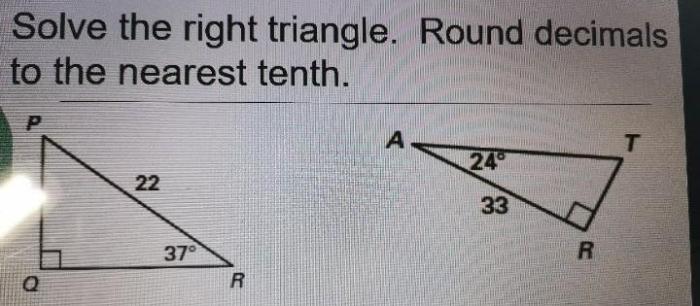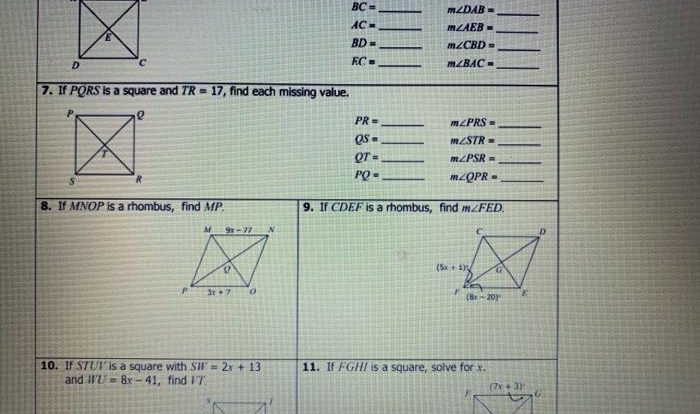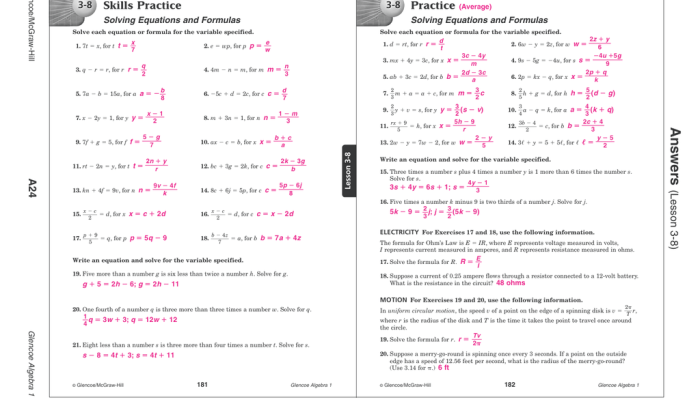Quadrilaterals in the coordinate plane worksheet answer key – Embark on a journey into the realm of quadrilaterals in the coordinate plane, where we delve into their properties, transformations, and applications. This comprehensive guide and answer key will equip you with a profound understanding of these geometric shapes and their significance in the world of mathematics and beyond.
Quadrilaterals, with their four sides and four vertices, form the foundation of many complex geometric concepts. By exploring their properties and transformations in the coordinate plane, we gain valuable insights into their behavior and relationships with other geometric entities.
Quadrilaterals in the Coordinate Plane: Quadrilaterals In The Coordinate Plane Worksheet Answer Key

Quadrilaterals are four-sided polygons that are defined by the coordinates of their vertices in the coordinate plane. They exhibit unique properties and characteristics that distinguish them from other polygons.
Types of Quadrilaterals, Quadrilaterals in the coordinate plane worksheet answer key
- Parallelogram: A quadrilateral with opposite sides parallel and equal in length.
- Rectangle: A parallelogram with four right angles.
- Square: A rectangle with all four sides equal in length.
- Rhombus: A parallelogram with all four sides equal in length.
- Trapezoid: A quadrilateral with only one pair of parallel sides.
- Kite: A quadrilateral with two pairs of adjacent sides equal in length.
Properties of Quadrilaterals
Quadrilaterals possess specific properties that can be calculated using the coordinates of their vertices:
- Side Lengths: The distance between two consecutive vertices.
- Angles: The measure of the angle formed by two adjacent sides.
- Diagonals: The line segments connecting opposite vertices.
- Area: The measure of the enclosed space within the quadrilateral.
Transformations of Quadrilaterals
Quadrilaterals can undergo various transformations in the coordinate plane, including:
- Translation: Moving the quadrilateral without changing its shape or size.
- Rotation: Turning the quadrilateral around a fixed point.
- Reflection: Flipping the quadrilateral over a line.
Applications of Quadrilaterals in the Coordinate Plane
Quadrilaterals have practical applications in various fields, such as:
- Architecture: Designing buildings and structures with specific shapes and proportions.
- Engineering: Creating bridges, dams, and other structures that require precise geometric shapes.
- Design: Developing logos, graphics, and user interfaces that incorporate quadrilateral shapes.
Detailed FAQs
What is a quadrilateral in the coordinate plane?
A quadrilateral in the coordinate plane is a polygon with four sides and four vertices, where each vertex has coordinates (x, y) that specify its position on the plane.
How do I find the area of a quadrilateral in the coordinate plane?
To find the area of a quadrilateral in the coordinate plane, you can use the formula: Area = 1/2 – |(x1 – y2 + x2 – y3 + x3 – y4 + x4 – y1) – (x2 – y1 + x3 – y2 + x4 – y3 + x1 – y4)|, where (x1, y1), (x2, y2), (x3, y3), and (x4, y4) are the coordinates of the vertices.



